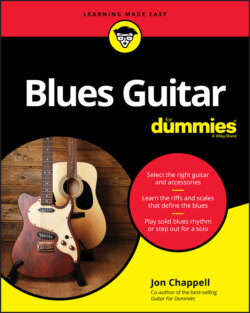Читать книгу Blues Guitar For Dummies - Jon Chappell - Страница 35
Beyond the Delta: Defining the Blues Guitar Sound
ОглавлениеBlues guitar can take many forms, and has grown dramatically since its humble beginnings in the south-central United States. Blues players of this time were largely self taught (and many of them illiterate), and one of the easiest ways to create different chords was to tune the guitar to an open chord, such as G major or E major, and then use a metal or glass slide (a pocket knife or bottle neck) to change chords. In both slide and fretted guitar styles, guitarists would emphasize the driving rhythm of the blues by thumping out steady bass notes on the low strings with their thumb while in turn, or simultaneously, fingerpicking upper strings to sound out chords, melodic riffs, and fills.
Playing simple chords to back up a blues singer is still a form of blues guitar — as is playing chords with a slide. You can’t help but sound bluesy when you move a slide from one position to another to play the different chords in a song — especially if you do it expressively. But beyond this, you can ascribe certain musical hallmarks to the blues that don’t make you play any more soulfully but provide you with a deeper understanding when you hear the blues.
In the following sections, I’ve broken down the elements of the blues into four musical concepts. Keep in mind that these concepts are the main ones and there are certainly more, but thinking of and listening to the blues while considering these criteria helps in your understanding of this sometimes elusive music form. You may not be able to define the blues, but you’ll know it when you hear it. Or as Sonny Terry says:
Sometimes I want to holler,
Sometimes I want to shout,
Sometimes I want to cry,
But I wonder what about.
I think I got the blues.
